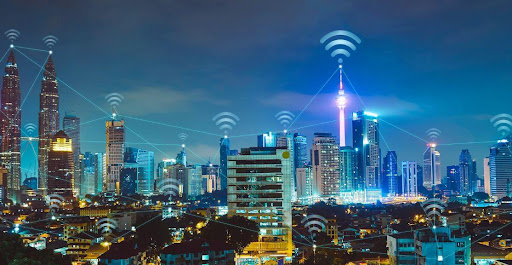10 Ways To Make Your Building Smarter
If you’re like most people, the word “smart” when applied to buildings probably conjures up images of the futuristic homes depicted in The Jetsons. But the truth is, the concept of a smart building solution is not nearly as far-fetched as it may seem. In fact, there are already many buildings around the world that are considered to be “smart”. So, what exactly is a smart building? And what are some of the ways that you can make your building smarter? In this blog post, we’re going to answer those questions and more. We’ll explore the benefits of having a smart building, how to create a smart building, and 10 ways that you can make your building smarter. We’ll also take a look at the future of smart buildings and answer some common questions about them. Finally, we’ll provide you with some resources for making your building smarter.
Introduction: What Is A Smart Building?
What is a Smart Building?
A smart building uses Power over Ethernet technology to optimize energy efficiency, enhance the comfort and safety of occupants, and improve overall operational performance. The term “smart building” generally refers to commercial or institutional buildings, such as office towers, hospitals, schools, government buildings, or retail stores. However, the definition of a “smart building” can be broadened to include any type of building – from homes to factories.
Smart buildings are often retrofitted with existing structures (such as walls and ceilings), but they can also be designed and built from scratch. In either case, the goal is always the same: to make buildings more efficient by using technology in ways that improve occupant comfort and safety while reducing energy use.
Smart buildings have a number of advantages that make them ideal for use in today’s economy. For starters, they are highly energy-efficient. In fact, some studies suggest that smart buildings can save up to 30% on energy costs compared to conventional buildings. Moreover, smart building technologies also tend to be more comfortable and safe than traditional construction techniques. For example, features like sensors and automated systems can help reduce the risk of accidents and injuries by monitoring the environment around occupants and automatically activating safety features when necessary.
Overall, smart building technology is becoming increasingly important as businesses strive to reduce their overall energy consumption footprint. By taking advantage of cutting-edge technologies such as software analytics, architects can create innovative designs that not only meet industry standards but also deliver real benefits for occupants and landlords alike.
The Benefits Of Having A Smart Building
Smart buildings are becoming more and more common, not just because they are technologically advanced but also because they offer a number of benefits. One of the most important benefits is the ability to monitor and control building systems remotely. This allows for increased energy efficiency and decreased operating costs. Additionally, it enhances security and safety features, as well as communication and collaboration among occupants.
Smart buildings are becoming increasingly popular for a number of reasons. One main reason is that they can be controlled remotely, which allows for increased energy efficiency and decreased operating costs. Additionally, it enhances security and safety features, as well as communication and collaboration among occupants. Another benefit is that smart buildings often use more sustainable materials and technologies, which helps to reduce environmental impact.
How To Create A Smart Building
One of the best ways to save money and increase efficiency in a building is to use technology to automate and manage its systems. This can be done through a number of different methods, some of which are listed below.
First, it’s important to use technology to automate system management. This can include using software to monitor and manage systems, or installing hardware such as sensors or cameras that monitor system performance. By automating these tasks, you can reduce the amount of time that you need to spend on these tasks, as well as improve overall system reliability.
Second, it’s important to create a safe and secure environment for your tenants, employees, and visitors. By implementing smart building techniques such as security cameras or door access controls, you can ensure that everyone who enters your building is safe. Additionally, you can help prevent theft by monitoring footage from security cameras and identifying potential offenders.
Finally, it’s also important to increase efficiency in your building by using smart building techniques such as energy conservation measures or sensor-based automation. For example, by turning off lights when they’re not needed (and vice versa), you can reduce energy consumption in your building significantly while still providing a level of safety for occupants.




